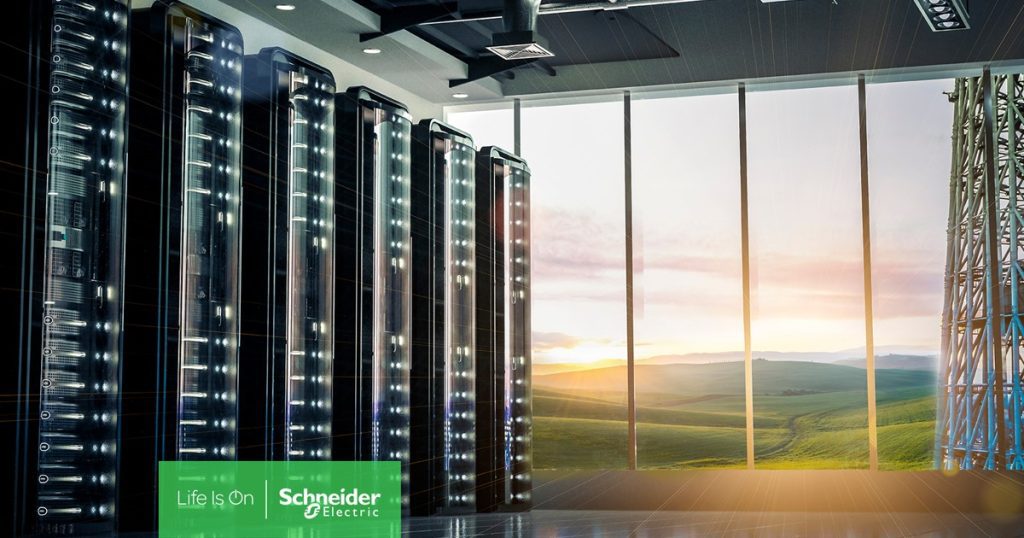Why is Schneider Electric so focused on Environmental Product Declarations?
At Schneider, we share our customers’ bold sustainability ambitions. And we share a challenge: As we build faster and faster to meet demand for digital infrastructure, it’s becoming more difficult to stay on track for our Net Zero goals. The goals revolve around Scope 3 emissions, which occur throughout our entire value chain, from mining to materials processing to the manufacturing of data center equipment. That’s why a focus on data center product decarbonization is so critical.
Data center operators are scrambling to tackle Scope 3 emissions. At a time when operators need to substantially reduce emissions, demand is expanding the overall carbon footprint. Most Scope 3 emissions for a data center are upstream and comprise the embodied carbon of the equipment and materials that go into building a data center. Reducing these emissions is an urgent issue; it requires choosing the lowest-carbon emission products possible for your data center. Once those products are deployed, the embodied carbon is set and spent. No future operational or grid efficiency can drive it down.
Schneider is working diligently to measure and reduce the embodied carbon of our solutions. We anticipated that Scope 3 emissions would be central to our customers’ decarbonization programs and the role suppliers would have to play in terms of transparency and equipment decarbonization.
We’ve been conducting lifecycle analyses for our products for more than 20 years. In 2008 Schneider established our Green Premium program to provide information on the environmental impact of our products to our customers and identify those with elevated sustainability performance.
Since the program’s inception, all Green Premium products carry an Environmental Product Declaration (EPD). Today, we publish EPDs for more than 80% of our products. By measuring and understanding our products’ carbon footprint, we can better choose the materials we use in the eco-design process for all new offers. We can incorporate lower-carbon materials, right-size equipment, and increase resource efficiency. As a result, we lower emissions as much as possible during manufacturing, ultimately helping our customers decrease their Scope 3 emissions.
What is an EPD?
An EPD is a transparent, objective report with data about the environmental performance of a product or service. The foundation of an EPD is a lifecycle assessment (LCA) that makes it possible to evaluate a product’s environmental performance over its entire lifecycle. The data covers energy and raw materials consumption, and pollution of air, water, and soil. Importantly, an EPD includes detailed information on the embodied carbon of raw materials from extraction to delivery at the data center. Schneider delivers EPDs to customers in the form of Product Environmental Profiles.
Recognizing the value of EPDs, Schneider has invested in publishing these documents at a pace that distinguishes us among our peers.
What has Schneider accomplished with product decarbonization tracking, and what’s next?
We have made EPDs a requirement for Green Premium products. We set a goal to generate 80% of our product revenue from Green Premium products in 2025 and exceeded the target in 2023, reaching 81%. We provide an EPD with most of the equipment we sell. We currently have more than 2,000 EPDs publicly available online, including 440 new documents produced last year. All of our EPDs are Type III Environmental Declarations in compliance with ISO 14025, and a portion of them are reviewed by a third-party accredited verifier (such as PEP Ecopassport).
In 2023, Schneider launched an EPD digitization program, using AI and dedicated software to extrapolate data for product family EPDs to the product level. This will allow us to produce quality data on more than 30,000 products.
We are incorporating key tenets of eco-design into all new offers, and developing equipment roadmaps with more low-carbon offers. These impact-reduction measures fall into six major eco-design categories — energy efficiency, resource efficiency, sustainable materials, sustainable supply chain, sustainable packaging, and lifetime extension.
We are also measuring the outcomes. Take sustainable materials, for example. Compared to 2021, we are manufacturing products with 28% more low-carbon steel, aluminum, and thermoplastics – based on the amount of these materials with green certificates, low CO2 production processes, and higher levels of recycled content. We are committed to reaching 50% by the end of next year.
What is Schneider doing to engage its own suppliers to measure and reduce embodied carbon?
Schneider Electric has committed to achieve a 25% reduction in carbon emissions across our entire value chain by 2030 and Net Zero emissions by 2050. This means all Schneider upstream suppliers need to transition toward clean energy. It’s a long-term transformative process. As a first step to onboard the suppliers, Schneider Electric launched The Zero Carbon Project in 2021, with a goal to cut 50% of operational carbon emissions from our top 1,000 suppliers by 2025.
At the end of 2023, we had signed up more than 1,000 suppliers and were engaging each of them to measure their carbon footprint, set reduction targets, and reduce through various means, including using renewable energy. Collectively, this group of suppliers has achieved a 27% reduction and put us on pace to reach our 50% goal by the end of next year. This effort helps drive down the embodied carbon of our offers and enables customers to build lower-carbon data centers.

Can Schneider help other companies replicate some of this success?
Schneider Electric is the global leader in supply chain decarbonization programs. We’ve employed our own services and solutions to implement the Zero Carbon Project. We recognize supply chain emissions are a global problem that manufacturing organizations across all sectors must address. Despite the urgency, it’s difficult because many of our suppliers (and our suppliers’ suppliers) lack the capabilities to measure and reduce their emissions – and to engage on this topic with their own suppliers.
Schneider has ongoing projects with many corporate clients, including Walmart and PepsiCo, and industry consortium projects for the pharma, mining/metals/materials, and semiconductor industries with Intel, Applied Materials, HP, ASM, and Google. Schneider maps out supplier networks and engages suppliers to measure and reduce the embodied carbon of their products. We encourage them to use renewable energy. In the Walmart Gigaton project, the first of its kind, we have convened the first cohort of suppliers to jointly execute a virtual PPA to boost renewable power generation by 250,000 MWh annually.
How can the data center industry work together to encourage more suppliers to measure and report on embodied carbon with EPDs?
Schneider is helping to lead several industry efforts aimed at recruiting data center suppliers to report on their products’ embodied carbon and to move toward standardizing EPDs as the format for doing so. Please see the blog “Data Center Growth is Putting our Sustainability Ambition at Risk—Together We Can Keep Both on Track ” for information about these efforts and to get involved!



Add a comment